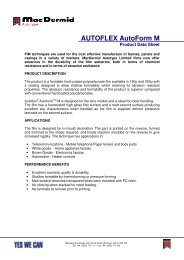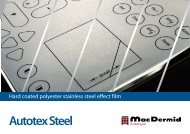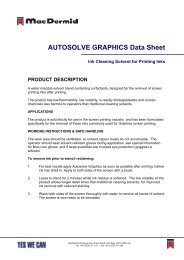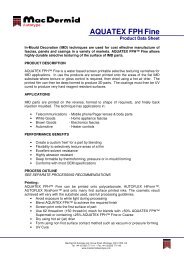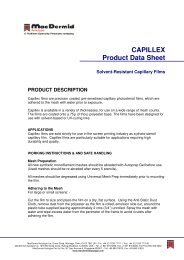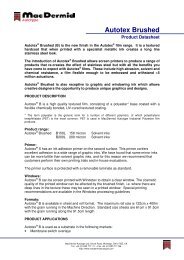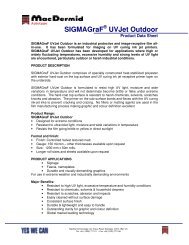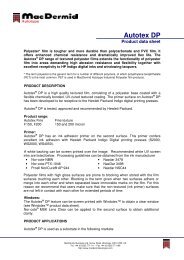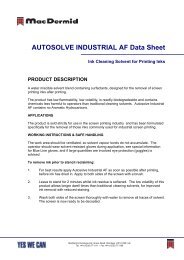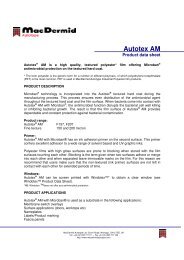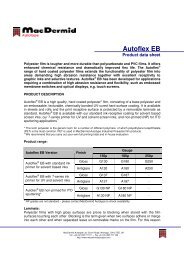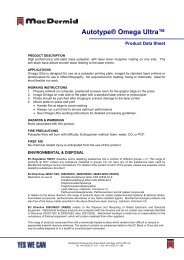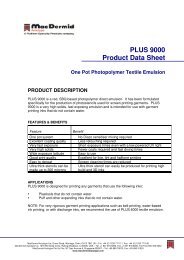Screen E-Book (.PDF) - MacDermid Autotype
Screen E-Book (.PDF) - MacDermid Autotype
Screen E-Book (.PDF) - MacDermid Autotype
- No tags were found...
You also want an ePaper? Increase the reach of your titles
YUMPU automatically turns print PDFs into web optimized ePapers that Google loves.
<strong>MacDermid</strong> <strong>Autotype</strong> DSPThe <strong>MacDermid</strong> <strong>Autotype</strong> Digital <strong>Screen</strong>Printer is a suite of PC programs that letyou explore many aspects of screen printingscience. You can download the suitefrom the same website as this e<strong>Book</strong>.MMCMoiré Mesh Calculator – one member ofthe DSP which lets you calculate moiréclashes between your halftone patternand your mesh.Mesh rulingMeshes are specified as so many threadsper inch or threads per cm. The finer themesh the higher the ruling.You have to be aware that some stainlessmeshes are measured in threads perFrench inch, which is 0.9384 of an Americaninch.Thread diameterThe thickness of the mesh thread (or fibre)is important as it influences the ink depositand the amount the mesh interferes withthe image. The diameter is specified in microns,μm.Halftone rulingHalftone images are made up of dotsspaced at regular intervals specified as lpi(lines per inch) or lpc (lines per cm). Higherquality usually implies higher halftone ruling.Dot shapeThe printer can choose the shape of thehalftone dots. They can be circular, elliptical,rhomboid etc. Shapes such as ellipticalare different in each direction (thinner inone direction, thicker in another) and arecalled asymmetric because they are nolonger symmetric. This asymmetry can affectthe visibility of a moiré pattern.Rosette patternWhen you print a 3-colour or 4-colourhalftone the dots overlay to produce theclassic rosette pattern that printers andcustomers seem to like.Dot buildThe thickness of the printed dots of ink. Ahigh build will give you stronger coloursbut also gives you a rough surface (andplenty of problems) if you print anothercolour on topDot gainIncrease in size of the printed dot overthe size in the positive and/or the stencil.Negative dot gain is a decrease in the size.Sawtoothing is one form of dot gain.Positive sawtoothing (or simplySawtoothing)When you print with a high Rz stencil, theink leaks underneath the stencil and convertsa smooth dot or a line into a sawtoothedversion.The sawtooth makes the dot or line bigger,so it’s called positive sawtoothing.Negative sawtoothingHere the dot or line is sawtoothed, butthe dot or line is smaller than it should be.This is negative sawtoothing and is usuallycaused by stencils with a high EOM.Moiré frequencyA frequency is simply the number of timessomething repeats itself. So a moiré frequencyis how many moiré spots or linesyou find per inch or cm.135



